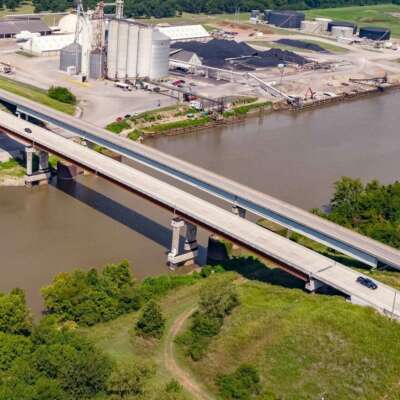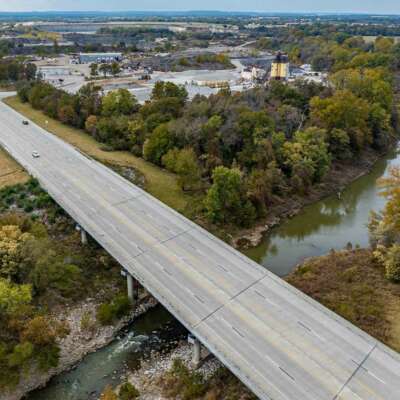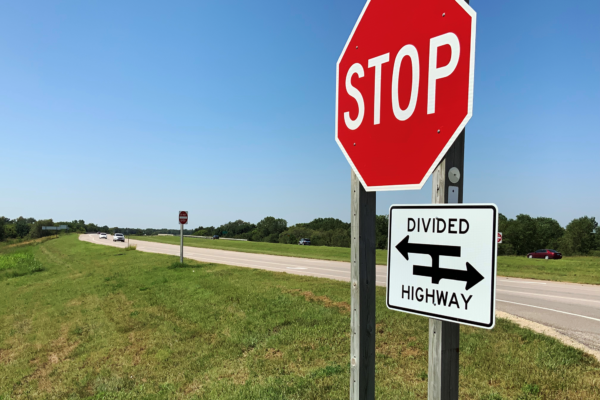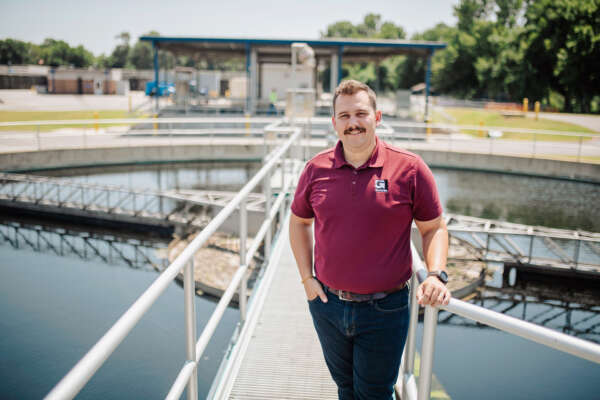Traversing above four city streets and a railroad, the new Anderson Street (SR 34) bridge in Bristol, Tenn. offers emergency vehicles and city traffic a much-needed route past slow-moving trains.
Garver designed the one-third-mile Anderson Street extension on new alignment from Edgemont Avenue to Pennsylvania Avenue, providing an unimpeded course between downtown Bristol and the city's east side. Prior to the Anderson Street improvements, Norfolk-Southern railway regularly stopped traffic at the railroad crossing along parallel roadway State Street.
Bristol drivers now have the option of traveling above the rails as well as cruising over Beecham, Taylor, Second and Third streets. Anderson Street originally terminated at Edgemont Avenue, but the 13-span, 1,105-foot, concrete deck bridge now extends this major east-west city corridor.
"Anderson Street crosses both local streets and a railroad. We designed the bridge to meet minimum vertical clearance at each of those locations," said Garver Project Engineer Madison McEntire, PE. "And because the existing railroad embankment was elevated above the surrounding terrain, the bridge required a higher vertical profile than normal."
The design incorporates a maximum deck grade of nine percent to obtain minimum clearance over the railroad.
"We could have achieved the needed vertical clearance with a less steep grade if we'd designed a longer bridge," said Garver Project Leader John Ruddell, PE, SE. "However, this project is in an urbanized area, and we wanted to minimize the footprint and impact on adjacent property owners."
Each end of the four-lane bridge ends in a curve, resulting in a deck with a superelevation transition—a horizontal tilt in the road. To give the contractor control in pouring the deck, Garver provided a table of bridge screed elevations with tenth points along each edge of the slab, along the top of the slab at each exterior beam line, and along the bridge's centerline. Because of the bridge's complex geometry, the intermediate points enabled the contractor to be more precise during the deck's construction.
In addition, Garver took an extra step in providing drawings for the bridge's span framing.
"Because of the curves, the bridge's Type III beams in the spans were placed on chords that set a maximum and a minimum cantilever width," said McEntire. "On these spans' framing plan drawings, we provided the cantilever width at tenth points on each exterior beam."
The Anderson Street improvements also incorporate intersection development. Anderson Street was widened at the Edgemont Avenue intersection to provide a left-turn lane, a new intersection was designed at Pennsylvania Avenue, and Fifth Street was closed at its terminus with Edgemont Avenue and reconstructed with a cul-de-sac.
Garver provided surveys, right-of-way plans, preliminary and final design, shop drawing review and consultation during construction.













Share this article